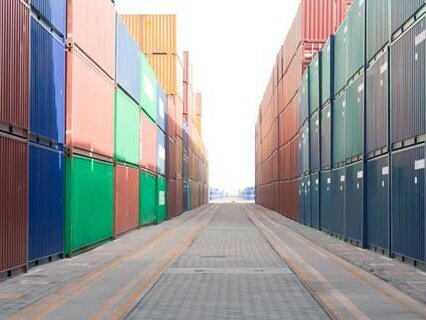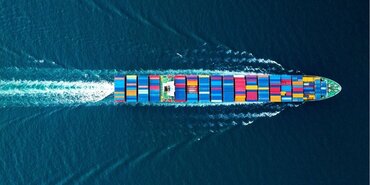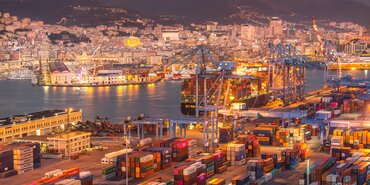TT Talk: Project cargo risks for ports

What are project cargoes?
Project cargoes refer to large, heavy, high-value, or complex pieces of equipment or materials that are typically critical to specific projects. Handling project cargoes is generally considered to be an atypical commercial activity within a port, which may fall outside of the original facility design specification.
The largest growth in this area in recent years has come from the offshore wind industry, but project cargoes can also be those that are unusual for a port to handle and pose special challenges. The advent of innovative technologies and markets also means that new types of specialist cargoes might be required to be shipped through a new location or import hub.
Examples include offshore jacket structures and mono-piles, wind turbines and blades, power station turbines and generators, substation components, prefabricated bridge structures, and large breakbulk items such as steel billets, coils and pipes.
Risks to ports
Project cargoes may be lucrative for shipping companies but can be a high-risk and low-reward activity for port operators. One of the biggest dangers of project cargo logistics is overloading and damaging port infrastructure, particularly pavements, quays, culverts, buried utilities and bridge spans. Often the loads from the cargo and its heavy-lift cranes and transporters are higher than the original design values and, if not, the infrastructure may have weakened through ageing. Furthermore, if specialist ships are involved, these may be unsuited to navigating in the port, putting infrastructure and other ships at risk.
Another risk is the business interruption to port operations. Project cargoes are often carried to and from ships on large, slow-moving self-propelled modular transporters (SPMTs), which require extensive traffic management to move safely through the port and its approach roads. A large amount of space is usually required for project cargo laydown areas on the quayside, as well as for heavy-lift cranes and SPMTs.
Project cargoes can also have an adverse impact on port safety. In addition to regular dock workers’ lack of familiarity with the type of load and lifting operations, there will a range of new third parties on site – such as the specialist lifting contractor and shipper – who will be unfamiliar with working in the port.
Lifting regulations and practice
Before agreeing to handle a project cargo that requires heavy lift operations, port operators need to understand the relevant national regulations and best practice for lifting operations. For example, in the UK they are L113: Safe use of lifting equipment: Lifting Operations and Lifting Equipment Regulations (LOLER) 1998 and BS 7121 – Code of practice for the safe use of cranes. The UK Health and Safety Executive also publishes a free online guide to LOLER. Note the regulations do not apply to ship cranes unless they are operated by or endanger non-crewmembers. TT Club also publishes a free risk management guide to safe slinging.
The lifting contractor should provide the port with an assessment of the impact of its cranes on the quayside pavement and underlying ground, after which the port should consider whether a further infrastructure assessment is required. The contractor should also produce a risk assessment and method statement for the main crane construction and dismantling, which may involve slave cranes. This should include the ground bearing pressures for all cranes and their outrigger mats, as well as for the main crane counterweight.
Other considerations include overhead obstructions – such as flight paths, power cables and bridges – and traffic management requirements both for the cranes and the oversized project cargo itself, which may need permissions from local highway authorities and the police.
Mitigating the risk
Once the port has decided to handle the cargo, a competent person should be appointed to have overall control of the lifting operation. This is a defined role in LOLER and BS 7121 but it would be sensible to have a similar designated person regardless of which local regulations apply. Depending on the value of the cargo, a marine warranty surveyor may also be appointed to advise on the lifting operation and its impact on the contract of affreightment.
The operation needs to be carefully planned, including selecting appropriate equipment, assessing tasks, devising precautions and supervising and overseeing activities. A key element in the lifting plan development is the bearing pressure assessment and an engineering assessment of the quayside. A qualified civil engineer should be appointed to calculate whether the ground pressures advised by the crane operator could be problematic for local and global stability.
A contract needs to be drawn up between the port and the shipper, which clearly defines relationships, responsibilities and liabilities, and holds the shipper and its contractors to the port’s health, safety and environmental standards. The contract should spell out the limitations of the port’s infrastructure and the requirements for the lifting contractor’s equipment, including safe bearing pressures and use of appropriate and suitably stiff outrigger mats to spread the load. The contract should also hold the designated person accountable both before and during the lifting operation.
Conclusion
Project cargoes are unusual, outsized loads which a port might not be used to handling, resulting in higher risks. They have specific requirements beyond normal cargo logistics, including for lifting the cargo on and off the ship.
Before agreeing to handle a project cargo, particularly if it requires specialist cranes, port operators need to be aware of the regulations and practice for lifting operations, understand the crane bearing pressures and the impact these may have on port infrastructure and recognise the potential disruption to port operations and safety. A contract with the shippers should be drawn up which clearly defines all responsibilities and liabilities.
Documents
TT_Talk_-_Edition_323__Chinese_.pdf (592 kB) 08/10/2025
- Author
- Mike Yarwood
- Date
- 09/06/2025





